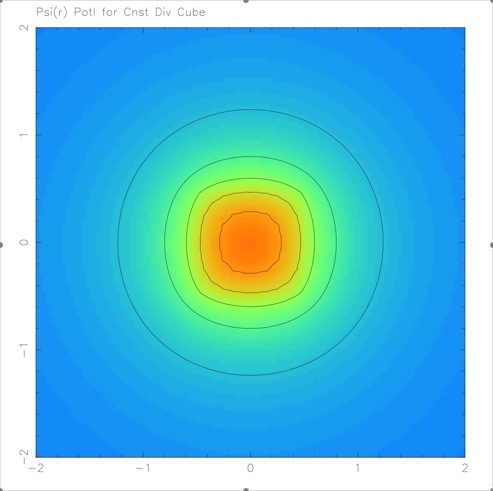Physics
322: Electromagnetic Theory I
Fall Term 2009-10
Instructor: Dr. Carl Adams
Physics 322 is a third year course
on static electric and magnetic fields. On this web page you will
find all relevant information about this course. In particular,you
will be able to download some
additional notes on the
course material, the course
outline, and a list of references.
There is also a link to previous tests
(midterms and exams).

M.C. Escher's 1961 "Waterfall" An artistic "exception" to the rule
that
the curl of the gradient equals zero. The scalar field is grav
potential, the gradient is grav force, the water flowing in a loop
under the influence of this force would represent a non-zero closed
loop line integral, and Stokes' theorem would imply a non-zero curl of
the grav force field.
 Suppose that we
want to use
Helmholtz Theorem to find the irrotational part of a vector
field. Our first task is to construct the scalar potential y(r)
from div F. The integral
is performed over the source (primed)
coordinates so that the answer is in terms of the field (unprimed
coordinates). In this case I have choosen a "simple" div F
function: it is equal to 1 inside of a unit cube that is centred
at the origin and 0 elsewhere. I am making a plot of y(x,y,0)
where red colours indicate a high value of y and blues indicate a low
value. There are also evenly spaced contours on the plot. I
have been able to perform the z'
part of the integral analytically but
I have numerically done the others.
Suppose that we
want to use
Helmholtz Theorem to find the irrotational part of a vector
field. Our first task is to construct the scalar potential y(r)
from div F. The integral
is performed over the source (primed)
coordinates so that the answer is in terms of the field (unprimed
coordinates). In this case I have choosen a "simple" div F
function: it is equal to 1 inside of a unit cube that is centred
at the origin and 0 elsewhere. I am making a plot of y(x,y,0)
where red colours indicate a high value of y and blues indicate a low
value. There are also evenly spaced contours on the plot. I
have been able to perform the z'
part of the integral analytically but
I have numerically done the others.
Outside of the cube y(r)
is decreasing and if you look at the contours they are almost circular
i.e. the actual position of the divergence is not as important.
As we move close to the "source" the contours begin to follow the
shape of the source. Inside of the source things again to look
circular.
To reconstruct F(r) we take the negative
gradient. The negative gradient will be normal to the contours
and point away from red regions. It will be larger when the
contours are closely spaced. So outside the cube F(r) is small and is probably
falling off as fast as 1/r2. It reaches a maximum near
the surface and then begin to fall again towards the centre of the
source.
The final check would be to verify that divergence of this
constructed F gives back the
original "source" divergence.
Notifications:
- A student from last year found an
online calculator for derivatives
- Sept. 16: Having trouble remembering what is in each
lecture? Are
they a bit disorganized? I will try and keep a running list of
the topics covered in lectures in this file.
- Oct. 1: An orthographic projection is just a 3-D style drawing
where the x, y, and z-axes are at angle to each other. If you
draw a cube you are making an orthographic projection.
- Oct. 1: Deadline for Assignment #2 extended to Wednesday.
- Oct. 1: 322 BBQ is on! We will be at the back side of the
PSC on Mon. Oct. 5 starting at 11:30. Burgers and smoked sausages.
- The Midterm was returned on Oct. 21. The average mark was
60%. For the time being, come and see me if you want to see the
solutions.
- Oct. 22: I have dropped Griffiths 2.26 as a required question for
Assignment #3.
- We now have optional tutorials on Friday afternoons from 2:15 to
3:30. They are in PSC 3046.
- The Midterm was postponed from Nov. 16 to Nov. 19.
- The Midterm was returned on Nov. 23 (after class). The
average mark was 68%. Solutions are outside of my office.

 Suppose that we
want to use
Helmholtz Theorem to find the irrotational part of a vector
field. Our first task is to construct the scalar potential
Suppose that we
want to use
Helmholtz Theorem to find the irrotational part of a vector
field. Our first task is to construct the scalar potential